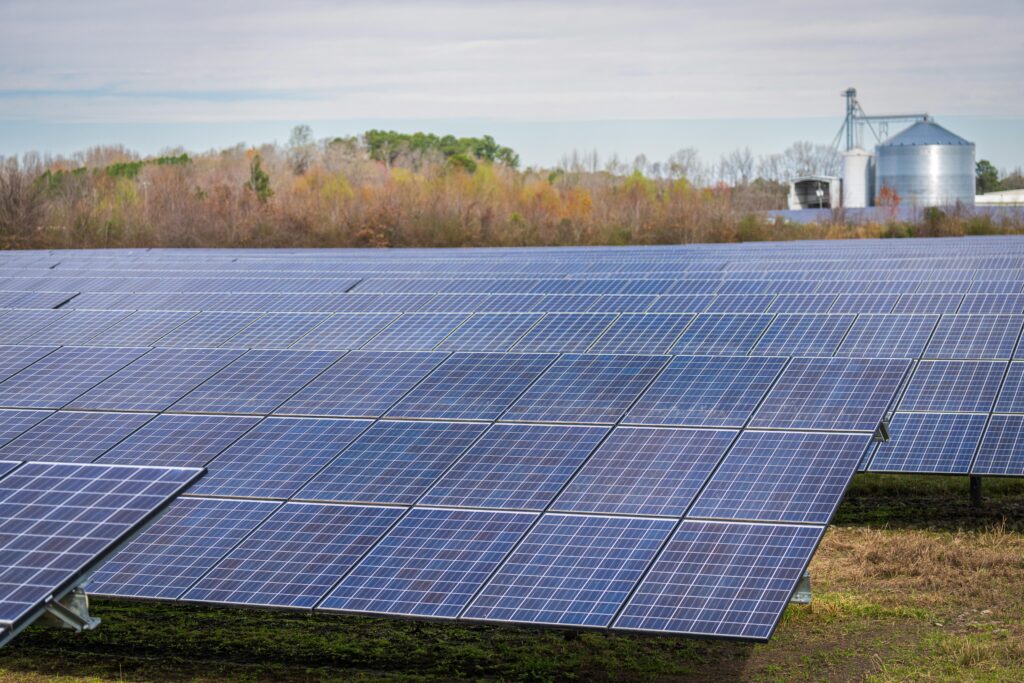POSTED
July 11, 2025
Investing in Utility-Grade Solar: The Pros and Cons of Private Funds vs. Public Stocks
Utility-scale solar just notched another record year, As the grid shifts decisively toward clean energy, investors have two very different routes in: public solar stocks/ETFs or Shasta Power’s private fund that backs projects from raw land to long-term PPAs. Here’s why that second path may deliver deeper impact and stronger, equity-like returns.

Investing in utility-grade solar is on a historic growth trajectory. In 2023 alone, the U.S. added 18.5 gigawatts of new utility-grade solar capacity, pushing the national total past 80 GW across 47 states—enough to power over 35 million homes (NREL, SEIA). With solar energy becoming the backbone of a clean energy future, investors have a unique opportunity to participate in this expansion.
But how should you invest? For most people, the options boil down to investing in public solar stocks or ETFs, or backing a private solar development fund like Shasta Power.
These two paths of investing in utility-grade solar are fundamentally different. Public solar equities offer market exposure to solar companies. Shasta Power, by contrast, offers a way to directly fund the early, high-value stages of utility-scale solar development—from land acquisition to power purchase agreement (PPA) execution. This article explores both paths, spotlighting how Shasta’s private fund model creates unique opportunities for strong returns, meaningful impact, and real ownership in America’s clean energy future.
Public Solar Stocks: Market Exposure with Flexibility and Volatility
Public solar equities are often the first stop for investors eager to support the clean energy transition. Accessible through any brokerage account and free from income restrictions, these stocks and ETFs offer a familiar, liquid route to enter the market. Investors can buy shares in solar companies or ETFs like Invesco Solar (TAN), adjust holdings on a whim, and track performance daily.
This fluidity, however, is a double-edged sword. While stocks offer portfolio versatility, they also expose investors to the broader, volatile currents of the market. In 2020, the TAN ETF rocketed over 200%, riding a wave of optimism. Yet by 2021 and again in 2023, it had shed 25% of its value, revealing the sharp swings tied not just to business fundamentals, but to interest rates, political rhetoric, and macroeconomic shifts (Yahoo Finance, PortfoliosLab).
Another key consideration is impact. Public solar stocks reflect support for clean energy, but rarely translate to direct action. Your dollars purchase existing shares, not new infrastructure. It’s an indirect vote of confidence—helpful, yes, but far removed from powering the next solar farm.
Public equities also lack project-specific tax incentives. Gains are taxed like any other capital appreciation unless held in a retirement account, and you don’t benefit from renewable-specific policies like the Investment Tax Credit or MACRS depreciation.
Still, for investors prioritizing convenience, diversification, and flexibility, public stocks remain a powerful tool—albeit one best suited for those with a long horizon and a strong stomach for market cycles.
Summary: Pros and Cons of Public Solar Stocks
Pros:
- Accessible to all investors
- Highly liquid and easy to trade
- Offers broad exposure to the solar industry
- Simple to integrate into traditional portfolios
Cons:
- High volatility is tied to macroeconomic factors
- No direct funding of solar projects
- No tax benefits from solar incentives
- ESG impact is indirect and harder to measure

Shasta Power: Building the Blueprint for Solar Expansion
If public stocks represent broad exposure, investing in utility-grade solar with Shasta Power offers something more intimate, tangible, and transformative. As a utility-scale solar developer, Shasta Power doesn’t just ride the solar wave—we help create it. Our model centers on originating solar projects from the ground up: identifying sites, securing land, performing due diligence, and locking in power purchase agreements with utilities.
What sets us apart is our exit strategy. We don’t wait for solar farms to be built and operated; instead, we sell these “shovel-ready” projects to long-term asset owners before construction begins. This approach minimizes exposure to operational risk while maximizing value creation during the high-leverage early stages of development.
Capital in our fund is typically committed for 4–7 years, a modest horizon compared to traditional infrastructure investments. And because we’re focused on de-risking projects and executing PPAs, our model targets internal rates of return above 12%..
Investors in Shasta Power don’t just earn—they help develop. Every dollar directly contributes to new solar capacity, accelerating America’s clean energy infrastructure. We report on meaningful metrics like megawatts enabled, tons of CO₂ offset, and communities impacted (Arevon Energy, SEIA).
In terms of access, our fund is offered under Regulation A+, making it available to both accredited and non-accredited investors. The minimums are modest, and the onboarding process is transparent. While liquidity is limited (capital remains committed until the project exits), the clarity of purpose and alignment with ESG goals make this a compelling option for mission-driven investors.
Shasta Power investments also benefit from renewable-specific tax structures. While individual investors don’t directly claim the Investment Tax Credit or depreciation, these benefits improve project valuations and indirectly enhance investor returns (Norton Rose Fulbright).
Summary: Pros and Cons of the Shasta Power Model
Pros:
- Directly funds new solar infrastructure
- IRR target of 12 %+, based on early-stage project value creation
- Shorter capital commitment (4–7 years)
- Transparent ESG reporting on real-world impact
- Offers access to non-accredited investors via Reg A+
- Investor value from project-level tax incentives (ITC, MACRS)
Cons:
- Illiquid for the duration of the investment
- Participation is limited to offering periods.
- Requires understanding of private fund operations

Conclusion: Which Path for Investing in Utility-Grade Solar Fits Your Financial Future?
When investing in utility-grade solar, both public solar stocks and private solar funds play a role in the clean energy transition, but they serve distinct needs of investors.
If you value liquidity, ease of entry, and broad exposure to the solar sector, public equities are a flexible option. Just know that you’re riding the wave, not shaping it.
But if you want to help lay the foundation for America’s solar infrastructure—to invest in projects that don’t yet exist and see your capital bring them to life—the Shasta Power model offers a bold alternative. With strong return potential, shorter capital commitments, and measurable ESG impact, it’s a chance to own the energy transition, not just observe it.
We’re building more than solar farms. We’re building the future of energy—and now, you can be part of it.
Learn more about upcoming opportunities, including Shasta Power Fund II, at ShastaPower.com.





